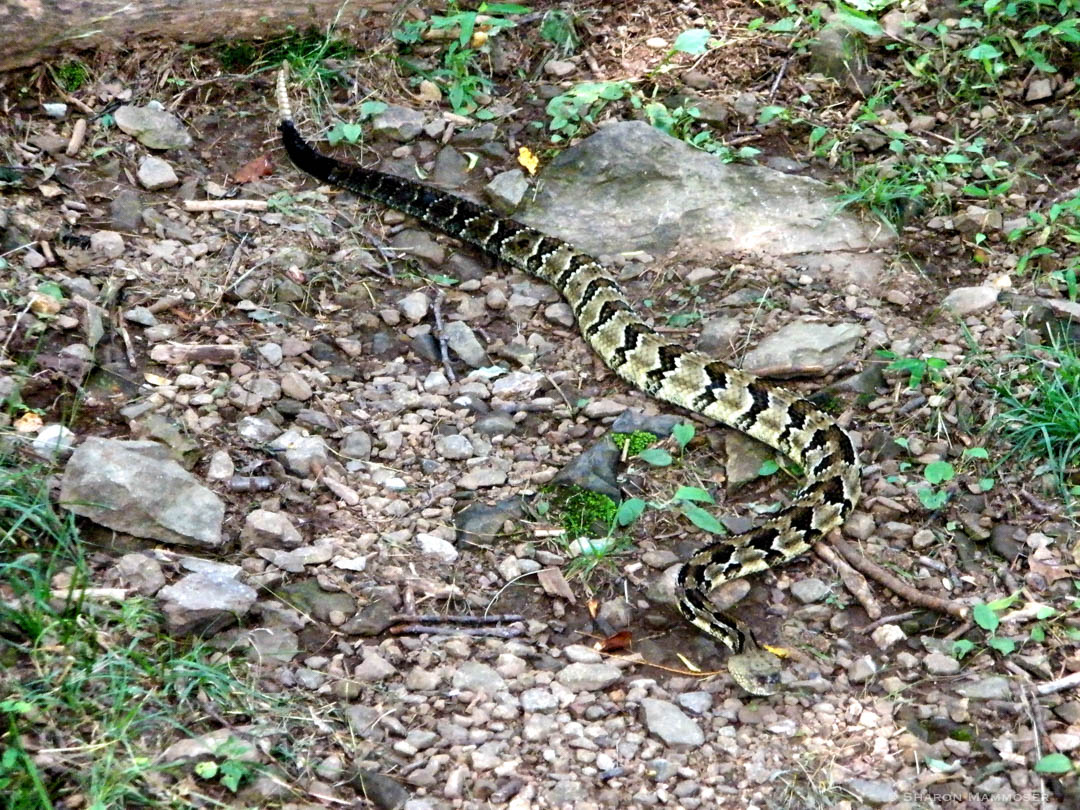If you looked closely at the photos from last week’s puzzler, you may have noticed the telltale rattle at the end of the snake’s body. It’s a timber rattlesnake (Crotalus horridus.) The triangular head, chevron pattern, thick body, temperature-sensitive pits between its eye and nostrils, vertical pupils, and rattle are all characteristic of this venomous snake. Did you know that the rattles are made of keratin– the same material as our fingernails and hair? If you’ve never heard one rattle, you can listen here, as I featured it as a puzzler some time ago. Rattlesnakes will not always use their rattle, as I discovered when I was thru-hiking the Appalachian Trail and saw many, but heard only one.
In some parts of NC there are 5 venomous snakes, (6 if you include the coral snake but it is VERY rare) but here in western NC, there are only two– the timber rattlesnake and copperhead. Both are venomous and are a medical emergency. There’s a link at the bottom of the post showing the range maps of the venomous snakes in NC.

Timber rattlesnakes have many color variations and can sometimes have a black tail, as seen in a few of the photos from last week. They reach maturity at 5 years old with females then reproducing every 2 to 3 years. Like the garter snake from the previous puzzler, these snakes are viviparous, meaning they give birth to live young. Rattlesnakes usually have between 4-14 babies. When they are first born, they have only one rattle, sometimes called a button, at the end of their tails. As they age, more rattles are added.
Want to know more about timber rattlesnakes? Like how long they live, more about their rattles or where they spend the winter? Here are ten things you may not know about this venomous snake.
Now onto our next puzzler– one more snake before we change tracks again.
Here’s a link to the page featuring the venomous snakes in NC, including the timber rattlesnake and copperhead.


